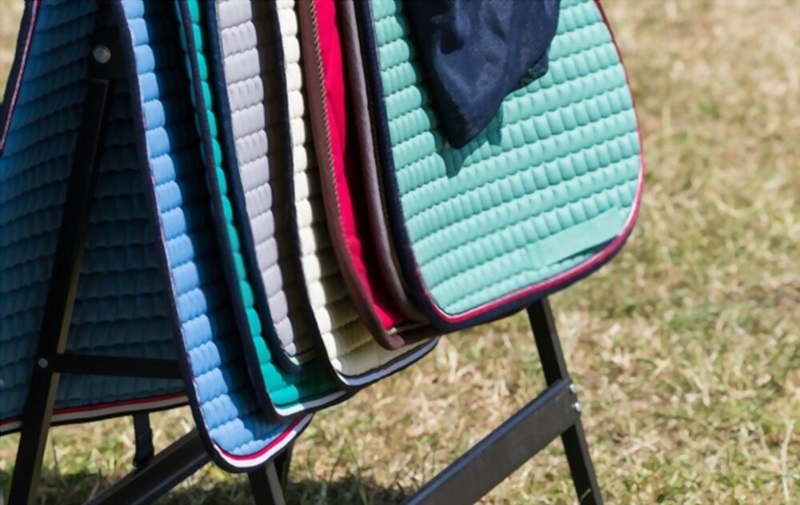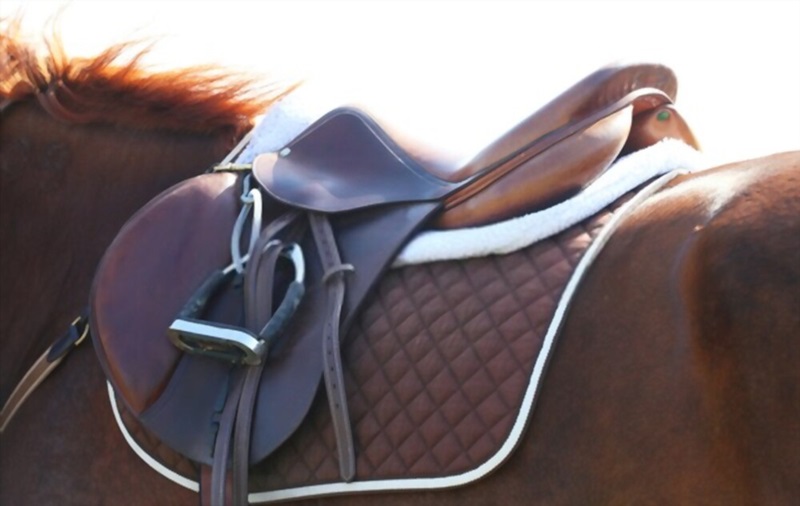How Different Materials of Dressage Saddle Pads Affect Your Horse’s Comfort

Introduction
Have you ever wondered what influence the material of your dressage saddle pads could have on your horse’s comfort and performance? Does riding on a pure cotton pad significantly differ from a sheepskin or synthetic one? How can we make sure that our horses are performing at their optimum levels while also ensuring their absolute comfort?
You might ask why such a simple component of your steed’s dressage gear could make a heap of difference. But analyse this – a runner wouldn’t perform optimally if their running shoes weren’t right, would they? Similarly, the saddle pad plays a critical role in your horse’s comfort and performance. The purpose of this blog post is to unravel the truth about different saddle pad material and their effect on a horse’s comfort and performance.
Why is the Material of Your Dressage Saddle Pad So Crucial?
The saddle pad sits directly on your horse’s back beneath the dressage saddle pads. It is the buffer between the hard saddle and the horse’s soft skin. Thus, it is essential to ensure that the material of the saddle pad is comfortable for your horse. It absorbs sweat, prevents heat build-up, reduces shock, and protects the skin from the saddle’s hard leather rubbing against it.
Materials like pure cotton are breathable and provide significant shock absorption. Whereas, sheepskin has fantastic breathability, wicking, and pressure-distributing qualities. Synthetic materials, on the other hand, offer durability and are easy to maintain.
Cotton Saddle Pads – The Natural Choice
Cotton is a popular choice among horse riders for dressage saddle pads. This natural fabric is breathable, very absorbent, durable and provides a perfect level of friction – it’s neither too slippery nor too grippy. However, its capacity to distribute pressure evenly is moderate. Cotton dressage saddle pads are washable and retain their form after washing.

Sheepskin Saddle Pads – The Luxurious Comfort
Sheepskin saddle pads may be a more expensive choice – they’re a benchmark for luxury after all – but they’re incredibly comfortable for the horse. Their high breathability and moisture wicking capacity help control sweat and prevents heat accumulation. Moreover, sheepskin provides great pressure distribution. However, maintaining a sheepskin saddle pad can be a bit challenging as it requires careful washing.
Synthetic Saddle Pads – The Practical Solution
Synthetic dressage saddle pads, usually made from polyester or acrylic, are durable, easy to clean, and affordable. They are lightweight, and the latest technologies have made them more breathable. Synthetic pads also offer excellent shock absorption. However, they may not provide the same level of comfort as their natural counterparts.
Feature Comparison: Cotton vs Sheepskin vs Synthetic
After understanding the basic advantages of each material, it’s crucial to compare them on certain features. Here are some important factors to consider: breathability, moisture control, pressure distribution, durability, care and maintenance, cost, and overall comfort.
Which Material Should You Choose for Your Dressage Saddle Pad?
Your choice of saddle pad material really depends on your horse’s specific needs, your riding habits, and personal preferences, as well as the local climate. You’ll need to weigh up the pros and cons of each material to arrive at the most suitable choice.
Conclusion
Understanding the effects of different dressage saddle pad materials on your horse’s comfort is really about understanding your horse. It’s about recognising what suits them best, and your willingness to make them comfortable and allow them to deliver their best. Be it Cotton, Sheepskin, or Synthetic material, each has its strengths. Your perfect choice will be the one that meets your horse’s needs while also balancing cost, ease of maintenance, durability, and comfort levels. After all, a comfortable horse makes for a happy rider!